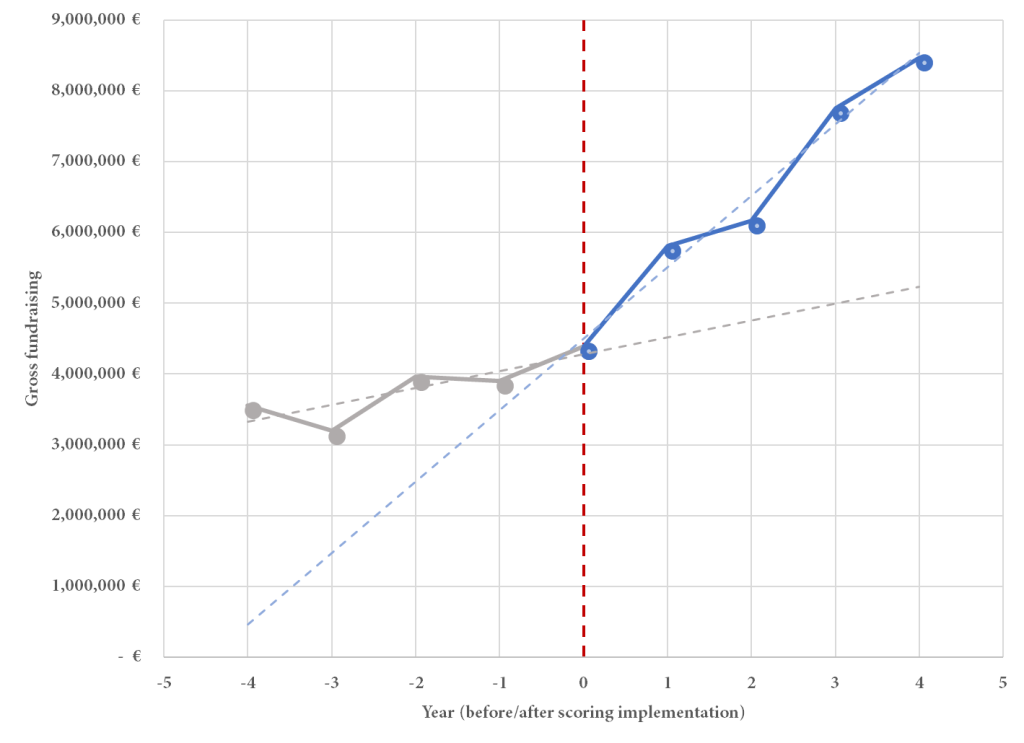The Hope Foundation [not its real name] was created to raise awareness about the importance of cancer research and the ongoing need for cancer research funding. When it decided to implement a scoring model in its donor database, it was in a significantly different situation than most NPO we had worked with.
The segmentation the Hope Foundation was using was rich and precise but not overwhelmingly complex. Their targeting strategy had been fine-tuned and optimized over the years. The number of solicitations each segment received had been carefully tested. Many in the fundraising team believed that implementing a potential donor scoring model was unlikely to contribute significantly to the effectiveness of their direct marketing fundraising strategy. Still, the fundraising director was adamant about implementing a scoring model and imposed it on reluctant subordinates, top management, and their direct marketing agency.
To the initial dismay of our team, during our dry-run simulation, the total number of recommended solicitations per year was almost identical to the organization’s current strategy. Still, the scoring model identified significant heterogeneity within each segment, and several changes were recommended (i.e., some donors in the same segment received more solicitations and some fewer).
During the four years preceding the implementation of the scoring model, the gross revenues of the Hope Foundation had increased by 23.5% or about 5.4% per year. In the first year of the implementation, the gross revenues of the Hope Foundation grew by 32.2%. Over the next four years, it increased by 92.7% (17.8% yearly).

Although the organization kept sending about the same number of solicitations yearly, their growth rate more than tripled.
The accelerated (and sustained) growth rate of the Hope Foundation cannot be attributed exclusively to the implementation of our donor potential scoring model, but to the whole suite of solutions that are part of our Decisive System 360° offering.
In addition, in year 2, the NPO developed a better and more targeted engagement strategy for their middle and major donors (identified as “A+” and “A++” in our scoring model), which significantly contributed to an increase in revenues. While targeting these donors was based on the scoring model, such a strategy was nonexistent before the scoring implementation. However, the NPO highest yearly growth rate in recent history (+32.2%) happened right after switching to our scoring model, which is significant.
Once the scoring model was implemented, the donors with the highest potential were more precisely identified in the database. They were, therefore, more carefully targeted and stewarded, which protected their relationship with the charity and grew their financial potential over time. The number of middle and major donors significantly increased, and their identification by the scoring model served as the basis for developing a unique program dedicated to them.







